Franschoek, South Africa
The pitter-patter of rain on the roof woke me this morning. Traveling in the shoulder season here — those weeks in between the high and low periods — does have its advantages, like fewer crowds and reduced room rates. But it comes at one substantial risk: the weather. Thus far, I’ve been lucky but knew it was only a matter of time before the odds turned against me.
There wasn’t really any need to rush so after a late breakfast (more an early lunch) and checkout from 2inn1, a taxi took me downtown to the Avis. I’d not expected much with my rental, so you could imagine my surprise when the agent pulled around a sporty new Mercedes A200. Score.

Driving on the right side of the car and left side of the street took some time getting used to. “Empty on the outside” was the mantra — keep that passenger’s seat away from oncoming traffic. Cruising along the N1 for the 45 minute drive to the Winelands was much easier than navigating the tangle of streets and intersections in Cape Town.
Moving north, the rain cleared as the dramatic Franschoek Valley came into view. Surrounded on all sides by rugged mountain peaks, this land — with its sand-like soil and gentle breezes — is famous for producing some of the world’s best wines. Franschoek, a one-road town lined with art galleries, small boutique stores and upscale restaurants, has been described as the “food and wine capital of the Cape.”
My accommodation here was at Akademie Street Guesthouse, run by the former mayor and his wife. There are three cottages on the property, I’m staying in Vreugde, whose name means “Joy” in Afrikaan. It’s a pretty spectacular place, with its own garden and plunge pool, a great porch area with outdoor heater and an enormous bed.



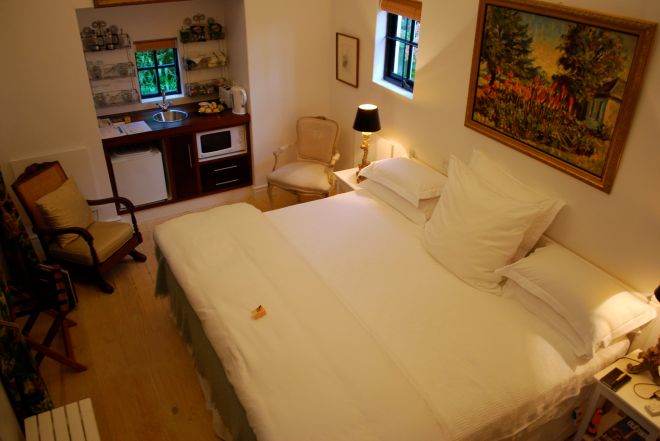
A short walk took me through Akademie’s surrounding gardens, past orange trees and the modern breakfast room attached to the main house. Afterward, strolling the quiet main drag (in stark contrast to the hustle of Cape Town), one got a sense of the history behind this town, as many of its buildings and churches from the 19th century remain unchanged.


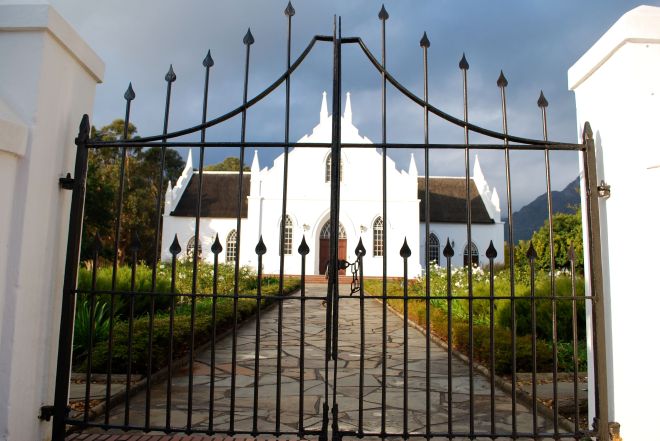
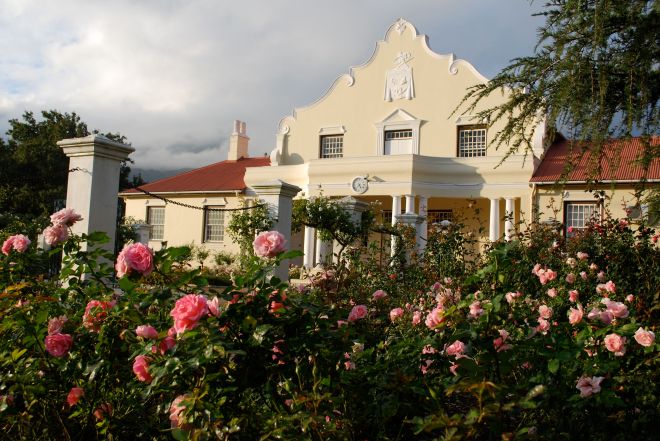
After a short nap, it was time for dinner at the Le Quartier Francais, whose restaurant, the Tasting Room, has been rated top 50 in the world for four consecutive years. Chef Margot Janse has also been voted South Africa’s best chef. Expectations were high.

It’s a prix-fixe menu, where diners select 4, 6 or 8 of the dishes to “taste.” It is then up to Janse to decide in which order they will come as well as whether to serve them as a starter, entrée or dessert.
My first dish was what I’d termed a “sweet seafood sampler.” First, on the left, was a prawn wafer, essentially pureed shrimp in between a cookie. In the middle was a lemon-basil poached crayfish tail. Finally, the right side was a squid-ink marshmallow. This turned out to be the best dish of the evening; it was unexpected but the saltiness of the seafood was balanced by the sugar.

Next up was my least favorite dish but one that just had to be tried. It was a bacon mousse (middle), a caramelized onion and caviar croquet and banana beignet, served with rocket, maple dressing and pan-fried slices of jámon. The flavors were generally quite good but the slimy texture of the bacon mousse grossed me out.
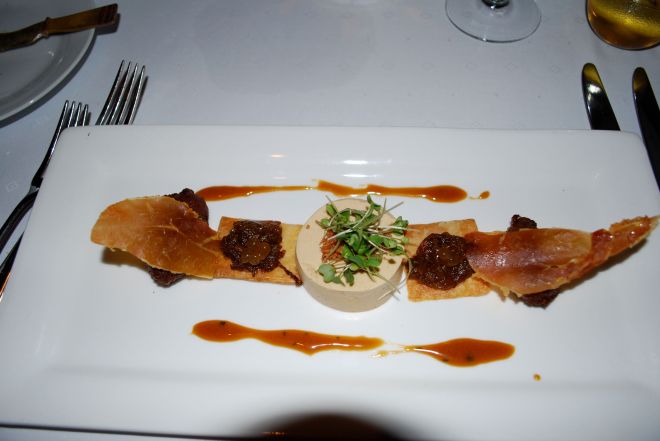
My entrée was a piece of Magret duck breast, served with cherry quinoa, prawn, goat cheese and a black pepper jus. This heavy dish was also quite good — I’d rate it my second favorite. I’m usually not the biggest fan of duck, but the breast was not too fatty and the accompanying sides went well with it.
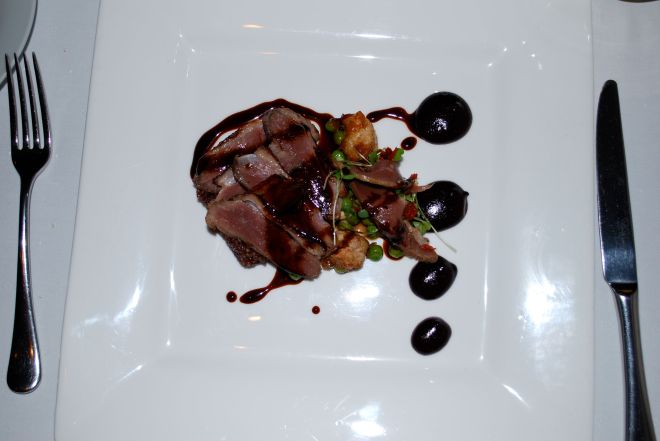
Last up was dessert, a gingered piece of watermelon, chai spiced sushi served with berry and orange. This was just a bizarre dish — I’m not really sure what compelled me to order it as it doesn’t even sound very appetizing.
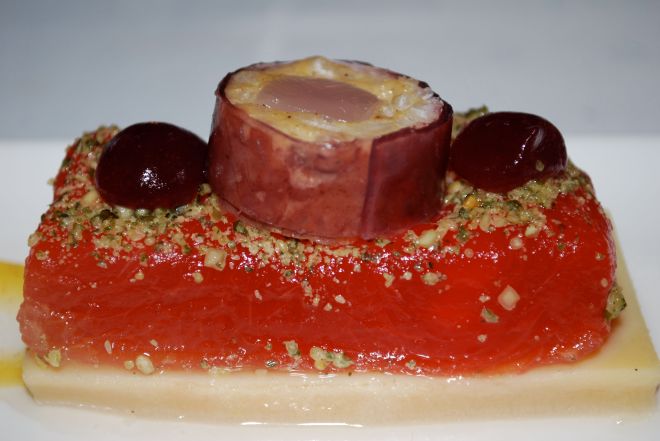
All in all, dinner was about $60USD — worth it? I’d say so, if only to sample many flavors and pairings that I’d never tasted before.
Bacon mousse, anyone?

JAMONNNNNNNNNN yum. bacon mousse, no grac.